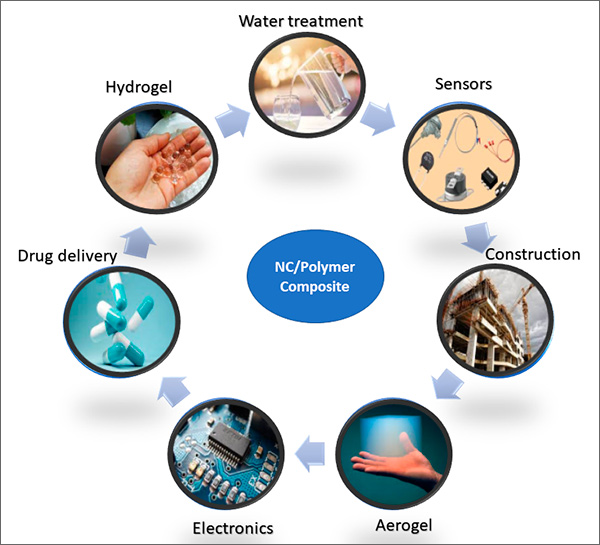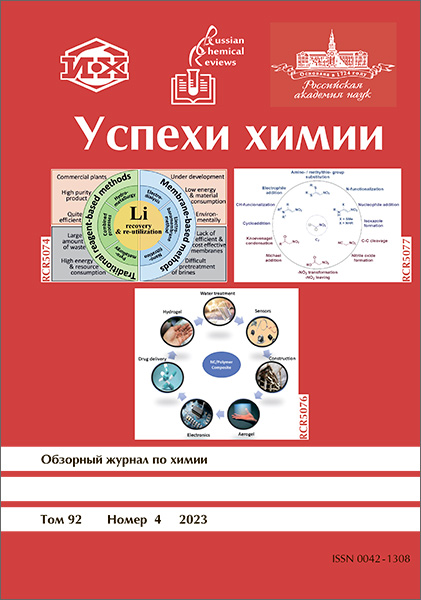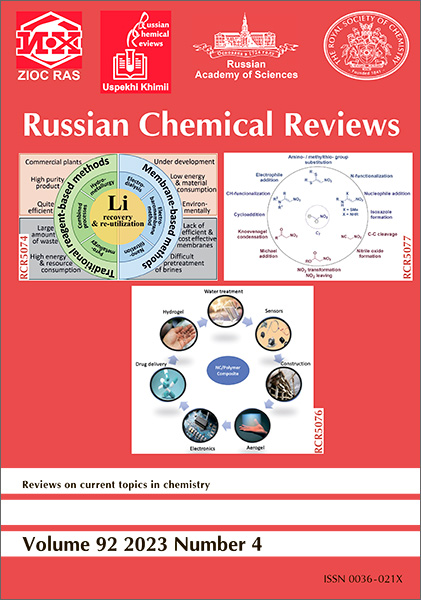|
This article is cited in 11 scientific papers (total in 11 papers)
Nanocellulose and its polymer composites: preparation, characterization, and applications
A. Abdel-Hakimab, R. Mourad
a Materials Testing and Surface Chemical Analysis Laboratory, National Institute of Standards, Tersa Street, El-Haram, El-Giza, Egypt
b Polymers and Pigments Department, National Research Centre, Dokki, Cairo, Egypt

Abstract:
Natural and synthetic polymeric materials are in high demand that continues to increase year after year, making them essential part of human life. By employing cellulose and cellulose derivatives as fillers for either synthetic or natural polymers, the environmental impact of non-biodegradable materials can be reduced. Nanocellulose (NC) materials have recently gained a lot of interest as potential fillers for reinforcing polymeric materials. The article highlights the different sources of NC, including plant sources, marine algae, bacteria and sea animals. The use of dewaxing solvents, alkali, bleaching agents, enzymes, 2,2,6,6-tetramethylpiperidine-1-oxyl radical (TEMPO), ammonium persulfate (APS), ionic liquids, deep eutectic solvents and steam explosion for pretreatment of lignocellulosic materials was explained. In addition, this review considers the extraction methods, including mechanical fibrillation for the production of cellulose nanofibers (CNF) and acid hydrolysis for the production of cellulose nanocrystals (CNC). Furthermore, the article discusses recent advances in the fabrication of NC polymer composites, such as the melt mixing process, solution casting, 3D printing, electrospinning and pickering emulsions methods. The different characterization techniques of NC polymer composites were discussed in this article. Many promising applications of NC polymer composites, such as sensors, electronics, fuel cells, construction, paper and board, biomedical, food packaging, water purification, aerogels, and hydrogels are considered.
Bibliography — 299 references.
Keywords:
Cellulose; Biocomposite; Nanocomposites; 3D Printing.
Received: 03.12.2022
Citation:
A. Abdel-Hakim, R. Mourad, “Nanocellulose and its polymer composites: preparation, characterization, and applications”, Usp. Khim., 92:4 (2023), RCR5076; Russian Chem. Reviews, 92:4 (2023), RCR5076
Linking options:
https://www.mathnet.ru/eng/rcr4421https://doi.org/10.57634/RCR5076
|


| Statistics & downloads: |
| Abstract page: | 129 | | References: | 2 |
|






 Contact us:
Contact us: Terms of Use
Terms of Use
 Registration to the website
Registration to the website Logotypes
Logotypes









